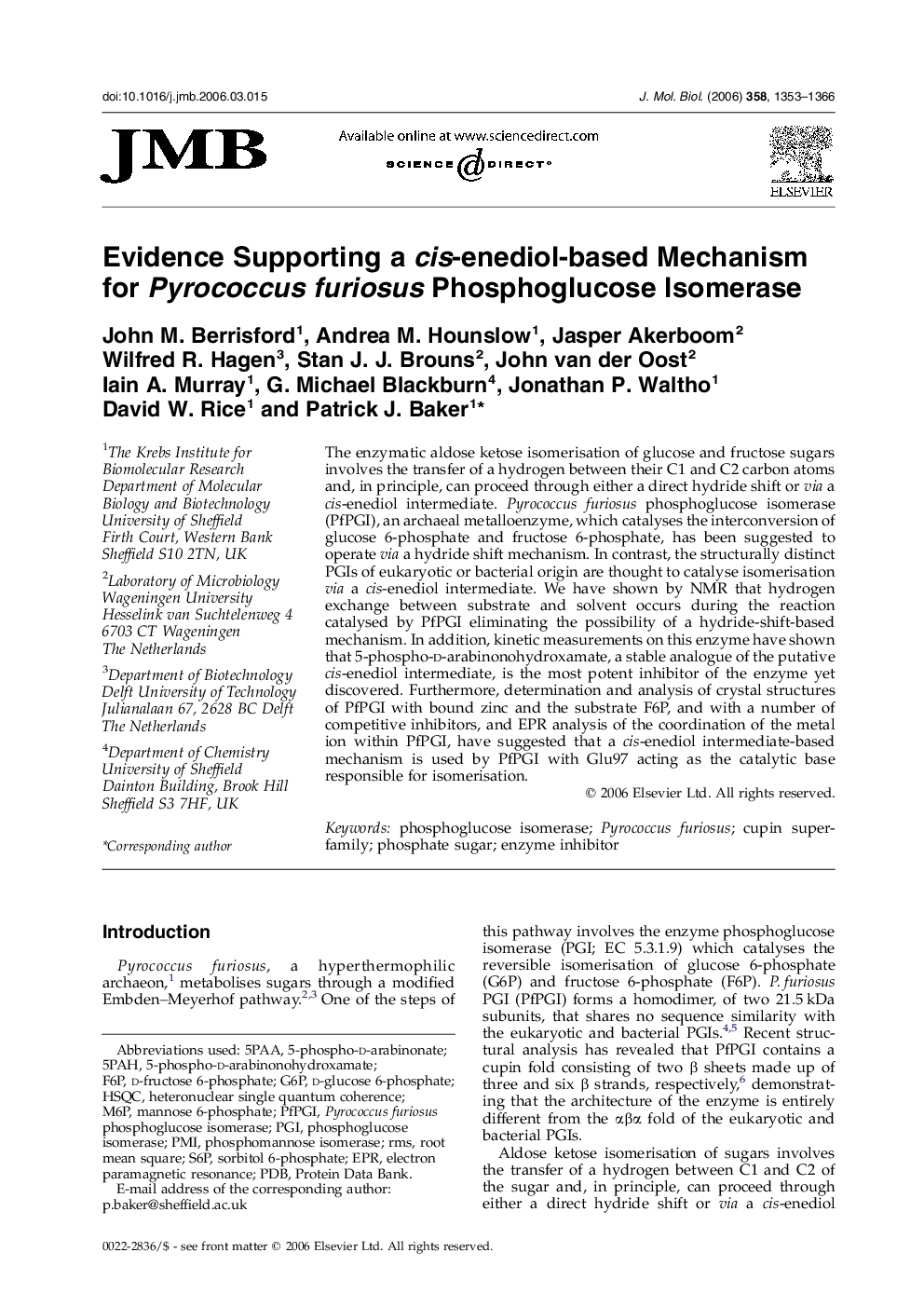| Article ID | Journal | Published Year | Pages | File Type |
|---|---|---|---|---|
| 2189870 | Journal of Molecular Biology | 2006 | 14 Pages |
The enzymatic aldose ketose isomerisation of glucose and fructose sugars involves the transfer of a hydrogen between their C1 and C2 carbon atoms and, in principle, can proceed through either a direct hydride shift or via a cis-enediol intermediate. Pyrococcus furiosus phosphoglucose isomerase (PfPGI), an archaeal metalloenzyme, which catalyses the interconversion of glucose 6-phosphate and fructose 6-phosphate, has been suggested to operate via a hydride shift mechanism. In contrast, the structurally distinct PGIs of eukaryotic or bacterial origin are thought to catalyse isomerisation via a cis-enediol intermediate. We have shown by NMR that hydrogen exchange between substrate and solvent occurs during the reaction catalysed by PfPGI eliminating the possibility of a hydride-shift-based mechanism. In addition, kinetic measurements on this enzyme have shown that 5-phospho-d-arabinonohydroxamate, a stable analogue of the putative cis-enediol intermediate, is the most potent inhibitor of the enzyme yet discovered. Furthermore, determination and analysis of crystal structures of PfPGI with bound zinc and the substrate F6P, and with a number of competitive inhibitors, and EPR analysis of the coordination of the metal ion within PfPGI, have suggested that a cis-enediol intermediate-based mechanism is used by PfPGI with Glu97 acting as the catalytic base responsible for isomerisation.
